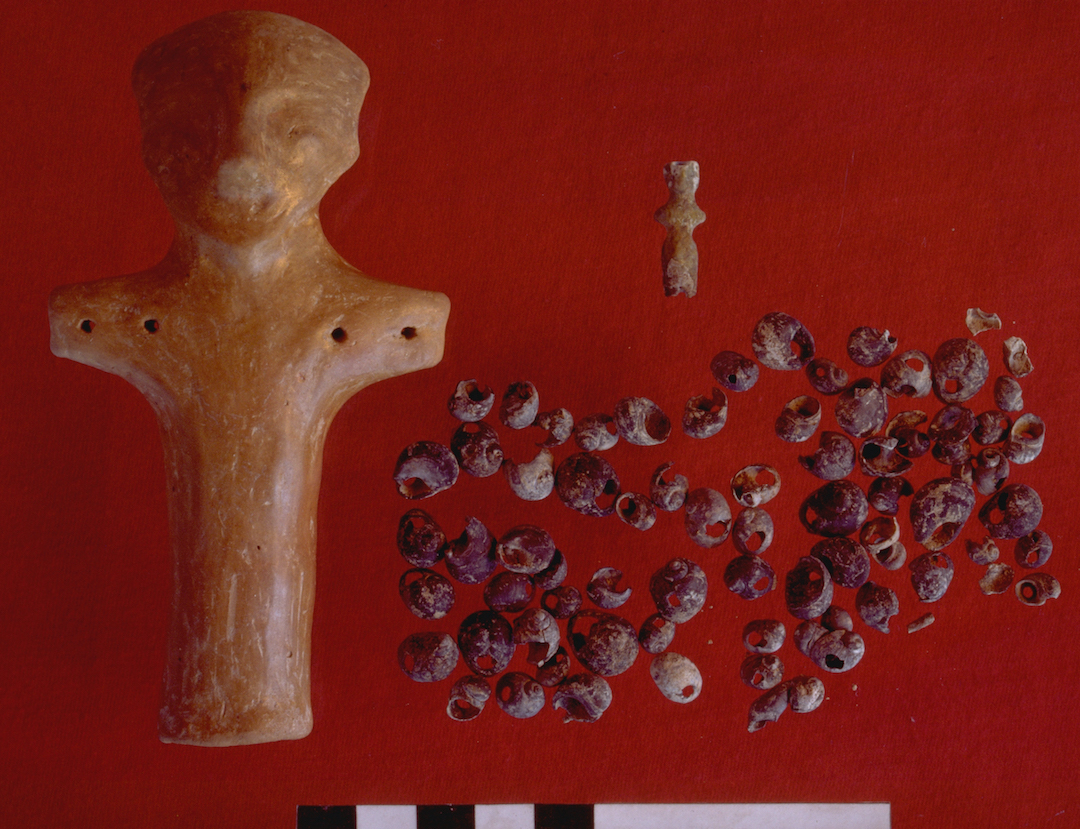
Rethinking Figurines
a critical view from archaeology of Gimbutas, the ‘Goddess’ and Popular Culture (1998)
with Margaret Conkey
As archaeologists who had critically analyzed the interpretation of anthropomorphic figurines in prehistoric Europe as legitimation of the Goddess movement (Conkey and Tringham 1995), we were invited by the editors to controbute to this volume. They are both based in the UK: Dr. Lucy Goodison, a researcher on ancient religions, and Dr. Chgristine Morris, an archaeologist of the later prehistory of the Mediterranean Basin. Their aim in this volume was to enable an open discussion of the history of belief in a Mother- or Earth-Goddess by archaeologists and historians. Contributors were encouraged to write in clear and accesible language (i.e. without jargon) about how, in their particular areas and disciplines, they approach the questions that fascinate the Goddess movement, how their data can be interpreted to understand ancient religions, and how the present is deeply embedded in the past that we construct. So our chapter focuses very much on the empirical data of the archaeological context, especially in the interpretation of anthropomorphic figurines, of Palaeolithic and Neolithic figurines of Europe. I focused on the figurines of my archaeological excavations at Opovo and Selevac in Serbia. At the time of writing, I was also developing the “Goddess Game” on-line exercise for my Intro to Archaeology class. This chapter complements nicely the more theoretical chapter written by us in the US edited book in 1995.
Abstract
In almost all of its variants, the Goddess movement has appealed to and uses archaeological materials, especially those that it claims to be images of females: female figurines or statuettes and female motifs on ceramics or other media.l Above all, images from the European Upper Palaeolithic and Neolithic periods (c. 40,000 to 5,000 years ago) are claimed to represent fertility and other positively-valued attributes2 and thus are often taken as material and symbolic evidence for the existence of a world in which females, as a generic category, were valued positively. We entered into a more thorough discussion of the use of archaeology in these contemporary social movements in an earlier version of this paper in which we drew attention to the rich literature, the complexity of the issues, and the variety of participants and views involved in what for the purposes of discussion we have termed the ‘Goddess movement’. Here, we shall focus on the use of the Upper Palaeolithic and complexity of the issues, and the variety of participants and views involved in what for the purposes of discussion we have termed the ‘Goddess movement’. Here, we shall focus on the use of the Upper Palaeolithic and Neolithic (c.40,000 to 5000 years ago).
Citation
Ruth Tringham and Margaret Conkey (1998) Rethinking Figurines: a critical analysis of Archaeology, Feminism and Popular Culture. In Ancient Goddesses: The Myths and the Evidence, edited by C. Morris and C. Goodison, pp. 22-45. British Museum Press, London.
Reviews
